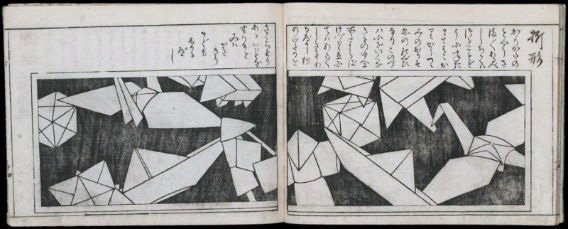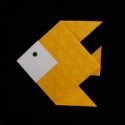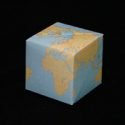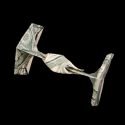History of Origami
The history of origami is under debate. Unlike other art forms, paper degrades quickly leaving no artifacts to suggest where origami originated and who first invented it. The information listed here provides a good overview of origami but is not an authoritative analysis of the subject. For detailed information regarding the history of paper folding, consult the works of John Smith, David Lister, and Koshiro Hatori.

That being said, there is very little examples of origami or paper folding in China. The “yuanbao” is probably the oldest example: these are paper folded to look like gold nuggets. The pieces are burnt as offering to the deceased. It is not clear when the tradition of folding yuanboa started (possibly near 1000 AD) but it continues even today.
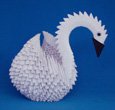

Paper Folding in the Japan
During the 6th century, paper was introduced into Korea and then into Japan by Buddhist monks (sometimes attributed to one monk in particular, named Dokyo). It is in Japan that paper folding became an art form and evolved into what we know today as “origami”.
In Japan, paper was expensive and not available to the general public. Paper and paper folding was limited to religious rituals and formal ceremonies. [Photo: Gohei with two strips of Shide]
Some of earliest examples of paper folding (with cutting) are “Shide”; these are zig-zag shaped paper used in purification rituals. Shide can be attached to straw ropes to designate sacred locations (Shimenawa), attached to alters, or attached to a wooden staff and used as purification wands (Gohei). It should be noted that Shide were probably made with fabric, but then later switched to paper. See how to fold Shide here
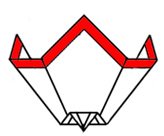
Mecho
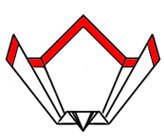
Ocho
In Japan, there are rules of etiquette when it comes to the giving and receiving of gifts. Paper adornments were folded in different ways to symbolize different things. For example:

“Noshi” was a folded piece of paper that accompanied a gift and functioned as a token of good fortune. More information about noshi here.
“Tsutsumi” was a formal gift wrapper. These ceremonial folds were simple and symbolized sincerity and purity. [Photo: Noshi]
There is very little evidence of recreational origami prior to the 1600’s but by the 17th century, play-origami was prevalent in Japanese culture so much so that you could find kimonos decorated with paper cranes.
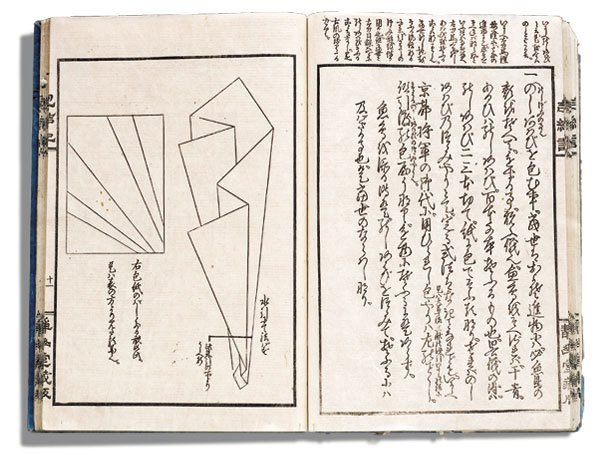

Next, a series of books called “Window on Midwinter“ (Kayaragusa, 1845) was printed. These books were about Japanese customs and there are two sections dedicated to paper folding. [Note: due to an error in translation, these books are sometimes mistakenly called Kan No Mado.] There was only one copy of this collection made; it is currently owned by the Asahi Newspaper in Osaka.
After this point, origami was well on its way. The Europeans also practiced paper folding: ideas and methods started to be mixed and developed until origami is what we see today.
Paper Folding in Europe
The history of paper folding in Europe is a story in itself. Most origami historians believe that early paper folding in Europe developed more-or-less independently from that of Japan. The main reason for this is that the origami models found in Europe tend to have a “grid” crease pattern (squares, rectangle, diagonals). In contrast, the ceremonial folds from old Japan tend to have judgement folds where the exact location of the cease is up to personal taste & interpretation. See Koshiro Hatori’s article which compares the development of origami in the East and West in the conference proceedings, Origami 5.
Through battle and conquest, the secrets of paper and paper-making left China in 750 AD and began their journey into Central Asia and then to Europe.

[Photo from here]
This is a (small) picture of a boat and some historians are not convinced that this is an origami boat. However, if this is indeed an origami boat, then it would suggest that paper folding developed in Europe independent of paper folding in Japan because in 1490, Japan would not have this type of recreational folds.
In Act IV of the play “The Duchess of Malfi” by John Webster (1614), character Bosola refers to paper prisons which boys use to imprison flies.
prisons boys use to keep flies in;“
Historians believe that this is in reference to the classic Waterbomb model.

3 x 3 fold with twist closure.]

The next textual evidence of origami in the west would be a drawing from a picture-book of a boy sitting in a paper boat floating in a tea cup. This image is from the book “Hanenpoot” by Willem Bilderchijk (1806). The boat is identified as the traditional Chinese Junk.



To this day, Pajarita is used as the logo for Asociación Española de Papiroflexia (Spanish Paper Folding Association).
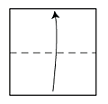
Contemporary Origami
From Europe, origami then spread to South America and then to North America. In the 1950, Akira Yoshizana and Sam Randlett developed a standard set of origami symbols to describe how to fold paper into models. These symbols remained essentially the same and is used in origami diagrams today. [Note:
David Lister suggests that it was Sam Randlett and Robert Harbin who formalized the use of the origami symbols.]

To see a timeline, or different perspectives on the history of origami, please visit these sites:
- Joseph Wu: Origami: A Brief History
- David Mitchell: Origami Design History
- K’s Origami: History of Origami
- John Smith: Notes on the History of Origami
- Japan Origami Academic Society’s History of Origami in Japan
- David Lister: History of Paperfolding: a German Perspective
- David Lister: Old European Origami

